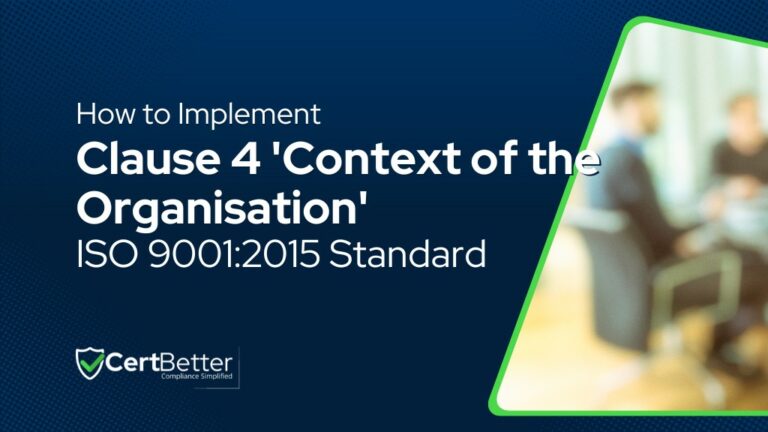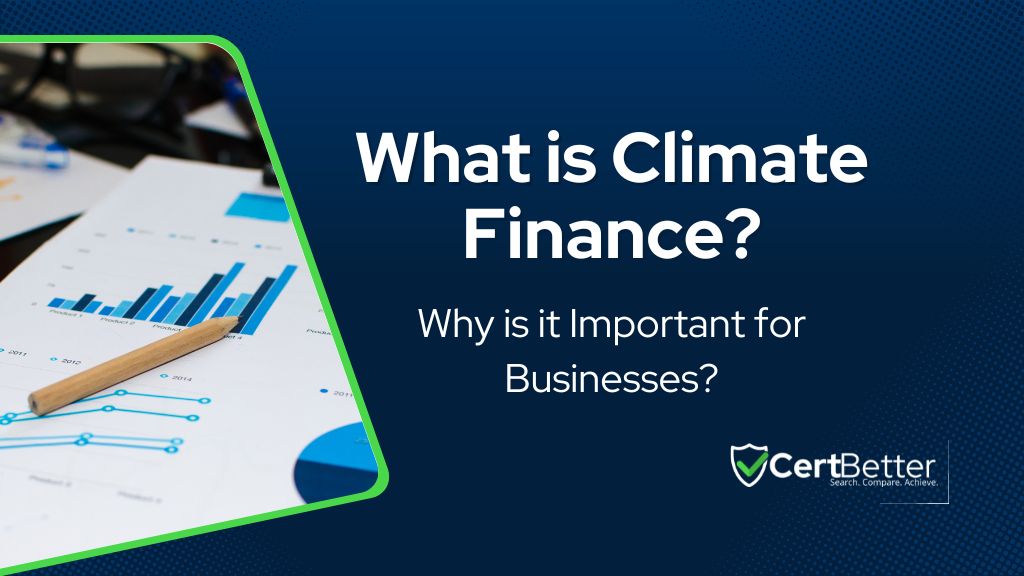Clause 4 Context of Organisation of ISO 9001 2015 With Practical Examples

Imagine that you check the weather and the state of your car before you plan a trip. Clause 4 of ISO 9001:2015 also says that a business needs to look at both its internal and external environments.
The internal environment includes things like the company’s beliefs, culture or resources that impact your business goals.
The external environment includes things like market trends, customer needs and any legal or special requirements that influence your business.
This part of ISO 9001:2015, “Context of the Organization” is very important to any business because it helps you understand what’s going on inside and outside your business and how it affects your quality management system (QMS).
Checkout my Beginner’s Guide to ISO 9001:2015 Quality Management Standard
The Context of the Organisation clause is divided into 04 parts:
- 4.1 Understanding the organization and its context
- 4.2 Understanding the needs and expectations of interested parties
- 4.3 Determining the scope of the quality management system
- 4.4 Quality management system and its processes
From my experience, companies that pay attention to clause 4 often find themselves better prepared to meet their business goals and tackle any challenges head-on.
The Importance of Context in ISO 9001:2015
In a dynamic market like Australia, businesses face unique challenges and opportunities. Embracing Clause 4 of ISO 9001:2015 allows businesses to consider local factors such as Australian market trends, regulatory changes, and customer expectations.
This understanding is crucial for developing a QMS that’s not only up to international standards but also resonates with our local business ethos and customer base.
Understanding the Context of the Organization
In my role as an ISO auditor, I’ve learned that understanding the “Context of the Organization” is key to unlocking the potential of ISO 9001:2015.
It’s like taking a step back to see the bigger picture of where your business fits in the wider world.
You look at everything — from the culture and goals within your company to the external market dynamics and customer expectations.
In particular, you consider the internal and external factors that have an effect on your company.
This comprehensive view helps to tailor your quality management system (QMS) so it’s not just compliant but also genuinely effective and responsive to the unique aspects of your business.
Let us look at the process for determining both internal and external factors under clause 4.
Clause 4.1 – Identify Internal and External Factors
Identifying internal and external factors is a fundamental step in aligning with ISO 9001:2015. This section particularly falls under clause 4.1 Understanding the organization and its context. I’ll write more on that later but let’s keep going.
Internally, it’s about understanding your organization’s culture, resources and processes.
Externally, it involves being aware of market conditions, legal requirements and customer expectations.
In my audits, I emphasize that this is not a one-time exercise but a continuous process.
Businesses need to constantly monitor (regular catch-ups!) and adapt to these factors to ensure their QMS remains relevant and effective.
Internal Factors Influencing an Organization’s Context
Internal factors include the culture, capabilities, and resources. They are about what happens inside the business — the staff skills, the company values, and the internal processes.
Understanding these helps in designing a QMS that fits the organisation like a glove, ensuring processes are efficient and aligned with the company’s goals.
External Factors and Their Impact on Organizational Strategy
External factors encompass market trends, customer needs, regulatory environments and even socio-economic changes. They are the outside elements that influence a business.
Recognising these helps a business not only comply with the ISO 9001:2015 standard but also stay ahead in the market by proactively adapting its strategy to external changes.
Clause 4.2 – Identify Stakeholder Needs and Expectations
Once you’ve identified the external and internal factors, the next bit is about identifying the needs and expectations of your interested parties or in simple words, call them stakeholders.
This section particularly falls under clause 4.2 Understanding the needs and expectations of interested parties. I’ll write more on that later but let’s keep going.
Stakeholders aren’t just your customers; they include employees, neighbours, suppliers, end-users, regulators and even the wider community.
Think of it as anyone who might be interested in or influenced by your business activities.
Each group has its own set of expectations from your business (and vice versa!).
ISO 9001:2015 requires you to identify these various groups and understand what they expect from you regarding quality.
Continuing your list of internal and external factors, you can add information related to your favorite stakeholders.
This understanding is essential for shaping a quality management system (QMS) that not only meets but exceeds these expectations, leading to enhanced customer satisfaction and business reputation.
Why Identifying Needs and Expectations of Stakeholders?
Strategies like surveys, feedback sessions and stakeholder meetings are crucial. This engagement not only helps align your QMS with their expectations but also builds trust and loyalty.
Engaging with stakeholders involves open communication and understanding their perspectives.
In my experience, businesses that actively engage with their stakeholders tend to have a more robust and responsive QMS.
Balancing stakeholder interests can be challenging. A practical approach is to prioritize these interests based on their impact on your business and the QMS.
Regular reviews and adjustments to your QMS, considering feedback and changing needs is a good start.
This balancing act is crucial for maintaining a quality-focused approach that serves the diverse needs of all stakeholders.
Clause 4.3 Determine the Scope of QMS
In my role as an ISO auditor, I’ve seen companies often confuse the importance of determining the scope of the quality management system (QMS) which falls under Clause 4.3 of ISO 9001:2015.
Scope is about pinpointing what your QMS will cover in terms of processes, products, services and locations.
Clause 4.3 involves defining the boundaries and applicability of your QMS.
Take it as an activity of your business you want to include or exclude from your QMS.
Bear in mind that it also sets boundaries for your ISO certification.
If your company is small to medium-sized, including all business processes in the QMS scope is better approach because you will not have to be overly concerned with the QMS’s boundaries.
A clearly defined scope ensures that your QMS is tailored to your business’s specific needs and context.
What you write in the About section of your website or in your marketing materials is an example of a QMS scope (considering the fact that you’re not excluding any part of your business).
Clause 4.4 Determine Processes for QMS
Clause 4.4 of the ISO 9001:2015 standard requires you to implement and maintain your QMS processes.
The best approach is to have a process mapping of your business activities and how they interlink.
For example, a manufacturing company might establish processes for quality control checks at various stages of production.
A service provider could implement customer feedback processes to improve service quality. It’s about creating a system where each process is defined, managed, and interlinked, ensuring that every aspect of your operation contributes to the overall quality and efficiency of your business.
Implementing Clause 4 in Your Business
Implementing Clause 4 requires a systematic and realistic approach using simple methods.
Start by identifying the internal and external factors that affect your business. This includes analyzing your business environment, market conditions, and regulatory landscape.
Next, identify your stakeholders and their needs and expectations.
Then, assess how these factors and stakeholder requirements impact your QMS.
Finally, define your scope and process maps to make it easier to understand for everyone.
Make a simple list or perhaps a more organised spreadsheet to record all this information.
This step should lead to a clear understanding of the risks and opportunities facing your business.
Based on this understanding, you can update or design your QMS processes to address these factors effectively.
Important step: Regularly review these processes to ensure they remain relevant and effective in the changing business context.
Tools to Identify Context of Organisation
For assessing context, practical tools include SWOT (Strengths, Weaknesses, Opportunities, Threats) analysis for internal factors and PESTLE (Political, Economic, Social, Technological, Legal, Environmental) analysis for external factors.
Regular industry research, stakeholder surveys and feedback mechanisms are also valuable in keeping your context analysis up-to-date.
These tools help in systematically identifying and evaluating the factors that can impact your QMS.
Next Step: Integrate into Your Business Strategy
Once you’ve assessed the context, integrate this analysis into your business strategy. This integration ensures that your QMS remains dynamic and responsive to the changing business environment, considering its risks and opportunities.
Pro Tip: When you talk about business risks and opportunities, don’t forget to include context. This will help you find any gaps (or non-conformances) in your QMS that might show up in the future due to changes or improvements.
This way, you can keep the context relevant to the business and make sure that your business processes are always aligned with it.
Conclusion
In conclusion, knowing and using the idea of the organization’s context, which is explained in Clause 4 of ISO 9001:2015, makes a quality management system work a lot better.
This approach ensures that your business is not only compliant with ISO standards but also deeply integrated with your business’s unique and dynamic environment.
- Last updated: May 22, 2024
- CertBetter
Our community of compliance professionals and ISO experts is ready to provide you with insightful answers and practical solutions. Join the discussion now!
- Recommended Reads
- 36 reads
-
Frequently Asked Questions
Understanding ISO Terminology: Guide to Important Terms and Concepts
No posts found
ResetConnect with ISO Certification Consultants
CertBetter makes it easy to find ISO certification consultants and compliance professionals from around the globe.

